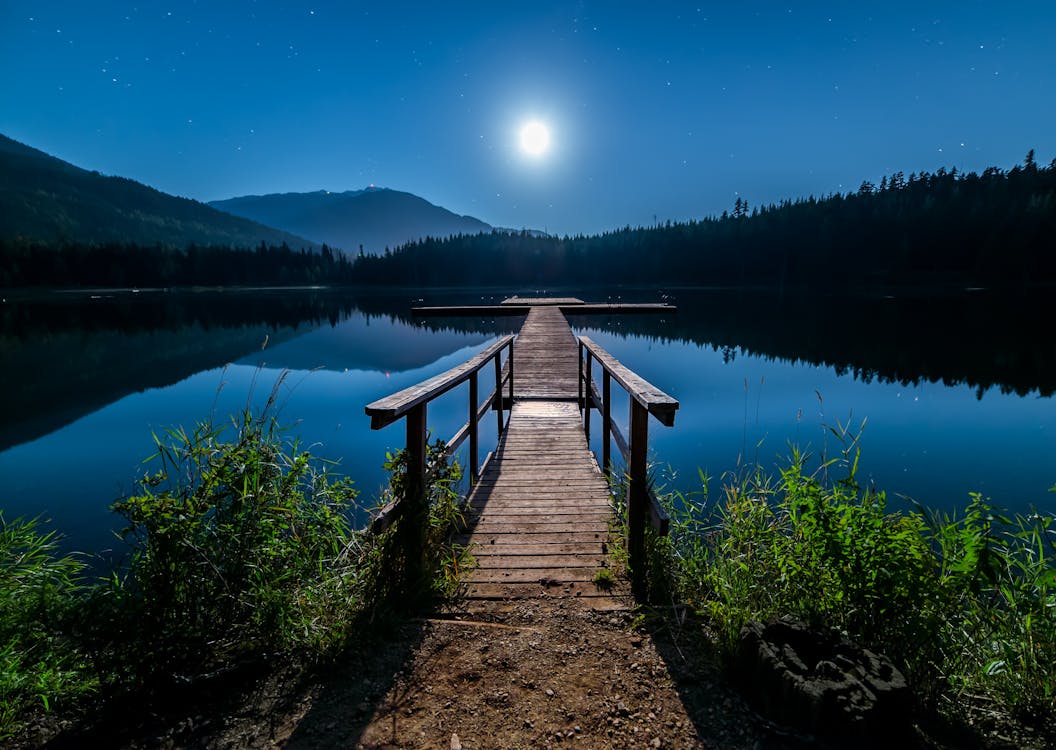Top 10 Mysterious Places on Earth: Unraveling the Secrets of Unexplained Wonders
Top 10 Mysterious Places on Earth: Unraveling the Secrets of Unexplained Wonders
Earth is a planet of awe-inspiring wonders, but some places defy explanation, captivating the minds of historians, scientists, and adventurers alike. From ancient structures to natural anomalies, these top 10 mysterious places on Earth hold secrets that remain unsolved, blending history, science, and folklore. Whether you’re intrigued by the Bermuda Triangle’s vanishings or the cryptic Nazca Lines, this guide delves deep into each location’s origins, theories, and cultural impact, offering a fresh perspective on these unexplained wonders. Let’s embark on a journey to uncover the hidden truths behind these enigmatic destinations!
Image: A foggy, eerie landscape with ancient stone structures under a cloudy sky, evoking a sense of mystery.
1. Bermuda Triangle, Atlantic Ocean
The Bermuda Triangle, spanning roughly 500,000 square miles between Bermuda, Puerto Rico, and Miami, is notorious for the unexplained disappearance of over 20 planes and 50 ships since the early 20th century. Notable cases include the 1945 disappearance of Flight 19, a group of U.S. Navy bombers, and the 1918 vanishing of the USS Cyclops with 306 crew members. Despite extensive searches, no wreckage has been conclusively tied to these incidents, fueling speculation about paranormal activity, magnetic anomalies, or rogue waves.
Scientific explanations point to the region’s heavy maritime traffic, unpredictable weather, and human error as likely causes. The U.S. Coast Guard notes that the area isn’t statistically more dangerous than other busy ocean routes. However, the mystery persists, with some theorizing underwater methane gas eruptions could sink ships by reducing water density. Culturally, the Bermuda Triangle has inspired countless books and films, making it a symbol of the unknown in popular imagination.
Travel Insight: While sailing through the Triangle is safe for most, adventurers can join guided tours from Miami to experience its eerie allure firsthand.

Image: A stormy ocean scene with dark clouds, representing the perilous Bermuda Triangle.
2. Nazca Lines, Peru
Located in the arid Nazca Desert of southern Peru, the Nazca Lines are a series of over 800 geoglyphs, created by the Nazca culture between 500 BC and AD 500. These massive drawings—depicting animals like monkeys, hummingbirds, and spiders, as well as geometric shapes—span 170 square miles and are best viewed from the air, raising questions about their purpose since aviation didn’t exist then. Archaeologists believe they were ritualistic, possibly linked to water and fertility, as the Nazca people relied heavily on underground aquifers in the desert.
Some fringe theories suggest extraterrestrial involvement, but there’s no evidence to support this. Recent drone surveys have revealed previously undiscovered lines, indicating the Nazca’s advanced surveying skills. The lines were made by removing the top layer of reddish pebbles to expose lighter soil beneath, a method preserved by the region’s dry climate. Today, the Nazca Lines are a UNESCO World Heritage Site, attracting travelers who marvel at their scale and mystery.
Unique Perspective: Imagine the Nazca people using kites or hot air balloons—hypothetical but plausible methods—to oversee their creations, blending ingenuity with spirituality.

Image: An aerial view of a desert with intricate patterns, symbolizing the Nazca Lines.
3. Stonehenge, England
Stonehenge, a prehistoric monument in Wiltshire, England, dates back to around 3000 BC. Comprising a ring of standing stones, some weighing up to 25 tons, it’s an engineering marvel of the Neolithic era. The bluestones were quarried 200 miles away in Wales, and theories suggest they were transported using sledges and ropes, possibly lubricated with animal fat, as proposed by a 2019 study from University College London. Its alignment with the solstices suggests it functioned as a calendar or ceremonial site, though its exact purpose remains debated.
Stonehenge’s cultural significance endures, with modern Druids gathering there for solstice celebrations. Recent archaeological digs have uncovered nearby settlements, hinting at a larger ritual complex. The monument’s construction, spanning centuries, reflects a deep commitment to its unknown purpose, making it a timeless symbol of human curiosity and ingenuity.
Visitor Tip: Visit during the summer solstice for a unique experience, but book tickets in advance as it’s a UNESCO site with limited access.

Image: The iconic stone circle of Stonehenge at sunrise, evoking ancient mystery.
4. Pyramids of Giza, Egypt
The Pyramids of Giza, constructed around 2560 BC, are among the most enduring mysteries of ancient engineering. The Great Pyramid, built for Pharaoh Khufu, consists of 2.3 million limestone blocks, some weighing 80 tons, precisely aligned with the cardinal directions. Egyptologists believe ramps and levers were used to move the stones, with a workforce of skilled laborers, not slaves, as once thought. A 2018 discovery of a void above the Grand Gallery suggests hidden chambers, fueling speculation about undiscovered treasures or architectural secrets.
While often linked to extraterrestrial theories, the pyramids’ construction reflects advanced mathematical knowledge, such as the use of pi in their proportions. They remain a testament to ancient Egypt’s cultural and religious devotion, with the Giza complex also housing the Sphinx, another enigma. The site’s allure continues to draw millions annually, eager to witness one of the Seven Wonders of the Ancient World.
Historical Insight: The Great Pyramid’s placement at the center of Earth’s landmass, calculated by modern geographers, adds a layer of cosmic intrigue to its design.

Image: The iconic Pyramids of Giza under a clear sky, showcasing their ancient grandeur.
5. Easter Island, Chile
Easter Island, or Rapa Nui, lies 2,300 miles off Chile’s coast, making it one of the most isolated inhabited places on Earth. Between AD 900 and 1500, the Rapa Nui people carved over 1,000 Moai statues, some standing 33 feet tall and weighing 75 tons, to honor ancestors. The statues were transported across the island using a “walking” technique, where they were rocked side to side with ropes, as confirmed by a 2012 experiment by National Geographic researchers. Yet, the island’s sudden depopulation remains a mystery, likely due to resource depletion and European contact.
The Moai’s stoic faces and the island’s isolation create an ethereal atmosphere, attracting visitors seeking to connect with ancient Polynesian culture. Recent studies suggest the statues marked freshwater sources, vital in the island’s arid climate, blending practicality with spirituality.
Cultural Note: The Rapa Nui people still celebrate their heritage through festivals, offering a glimpse into the island’s vibrant past.

Image: Moai statues standing on Easter Island, overlooking the ocean at sunset.
6. Area 51, Nevada, USA
Area 51, a remote U.S. Air Force base in Nevada, has been shrouded in secrecy since the 1950s, when it was used to test U-2 spy planes during the Cold War. Its association with UFO sightings—often attributed to experimental aircraft—spawned alien conspiracy theories, amplified by the 1947 Roswell Incident nearby. Declassified documents from 2013 confirm its role in stealth technology, but restricted access and minimal public disclosure keep speculation alive about extraterrestrial activity.
The base’s mystique has permeated pop culture, inspiring movies like *Independence Day*. The nearby Extraterrestrial Highway draws tourists with alien-themed attractions, though the base itself remains off-limits, guarded by armed security. Area 51’s secrecy continues to symbolize humanity’s fascination with the unknown.
Critical Perspective: The UFO narrative may stem from Cold War disinformation to distract from military projects, a theory supported by declassified CIA reports.

Image: A barren desert landscape with a distant, restricted military sign, evoking Area 51’s secrecy.
7. Darvaza Gas Crater, Turkmenistan
The Darvaza Gas Crater, dubbed the “Door to Hell,” burns in Turkmenistan’s Karakum Desert, a 100-foot-wide pit ignited in 1971 by Soviet engineers drilling for oil. They accidentally tapped into a natural gas pocket, set it alight to burn off the gas, and expected it to extinguish in weeks—yet it has burned for over 50 years. The crater’s fiery glow, visible for miles, creates a surreal spectacle, drawing adventurers to its remote location.
Geologists estimate the gas reserves could last centuries, though Turkmenistan has considered extinguishing it to develop the area. The crater’s unending flames and the mystery of its longevity make it a unique natural phenomenon, blending human error with nature’s raw power.
Travel Insight: Camping near the crater offers a once-in-a-lifetime experience, but travelers should go with a guide due to its remote location.

Image: A fiery crater glowing in a desert at night, representing the Door to Hell.
8. Blood Falls, Antarctica
Blood Falls, located in Antarctica’s Taylor Glacier, is a striking phenomenon where a crimson liquid seeps from the ice, discovered in 1911 by geologist Thomas Griffith Taylor. Initially thought to be algae, a 2003 study revealed the color comes from iron-rich saltwater trapped beneath the glacier for millions of years. When the water contacts air, the iron oxidizes, creating a blood-like hue. The source is a subglacial lake, isolated since the continent froze over 30 million years ago, hosting microbes that survive without sunlight—a discovery that informs astrobiology research for Mars.
This natural wonder’s eerie appearance and scientific significance make it a focal point for researchers and a symbol of Earth’s hidden ecosystems. Access is limited to scientific expeditions, but its story captivates those intrigued by the planet’s extremes.
Scientific Insight: The microbes in Blood Falls use sulfate as an energy source, offering clues to life in extreme environments, both on Earth and beyond.

Image: A crimson waterfall flowing down a white glacier in a frozen Antarctic landscape, showcasing Blood Falls.
9. Aokigahara Forest, Japan
Aokigahara Forest, at the base of Mount Fuji, spans 12 square miles and is known as the “Sea of Trees” for its dense canopy. It’s also called the “Suicide Forest” due to its tragic history, with dozens of annual suicides reported since the 1960s. Japanese folklore ties the forest to yurei (ghosts), and its eerie silence—due to minimal wildlife—amplifies its haunting reputation. Signs at the entrance urge visitors to seek help, reflecting efforts to address mental health stigma in Japan.
Despite its dark associations, Aokigahara is a natural wonder, formed from volcanic eruptions 1,200 years ago. It’s a popular hiking spot, with trails offering views of Mount Fuji, though visitors are advised to stay on paths due to the forest’s disorienting layout.
Cultural Reflection: The forest underscores the importance of mental health awareness, with local initiatives providing support to those in need.

Image: A dense, misty forest with twisted trees, capturing the eerie atmosphere of Aokigahara.
10. Danakil Depression, Ethiopia
The Danakil Depression in Ethiopia’s Afar Region is one of the harshest environments on Earth, sitting 410 feet below sea level and averaging temperatures of 35°C. Known as the “Gateway to Hell,” it features lava lakes, acid pools, and neon-yellow sulfur springs, creating an otherworldly landscape. The area is a geological hotspot, where tectonic plates diverge, forming the Afar Triple Junction—a key site for studying Earth’s crust formation.
Despite its hostility, the Afar people mine salt here, a tradition dating back centuries. The region’s alien-like conditions also make it a testing ground for astrobiology, as scientists explore how life might survive on Mars. Travelers brave the extreme conditions to witness its surreal beauty, often describing it as stepping onto another planet.
Travel Insight: Guided tours are essential due to the harsh climate and lack of infrastructure—ensure you’re prepared for extreme heat and remote travel.

Image: A surreal landscape with bubbling lava and colorful mineral deposits in the Danakil Depression.

Comments
Post a Comment